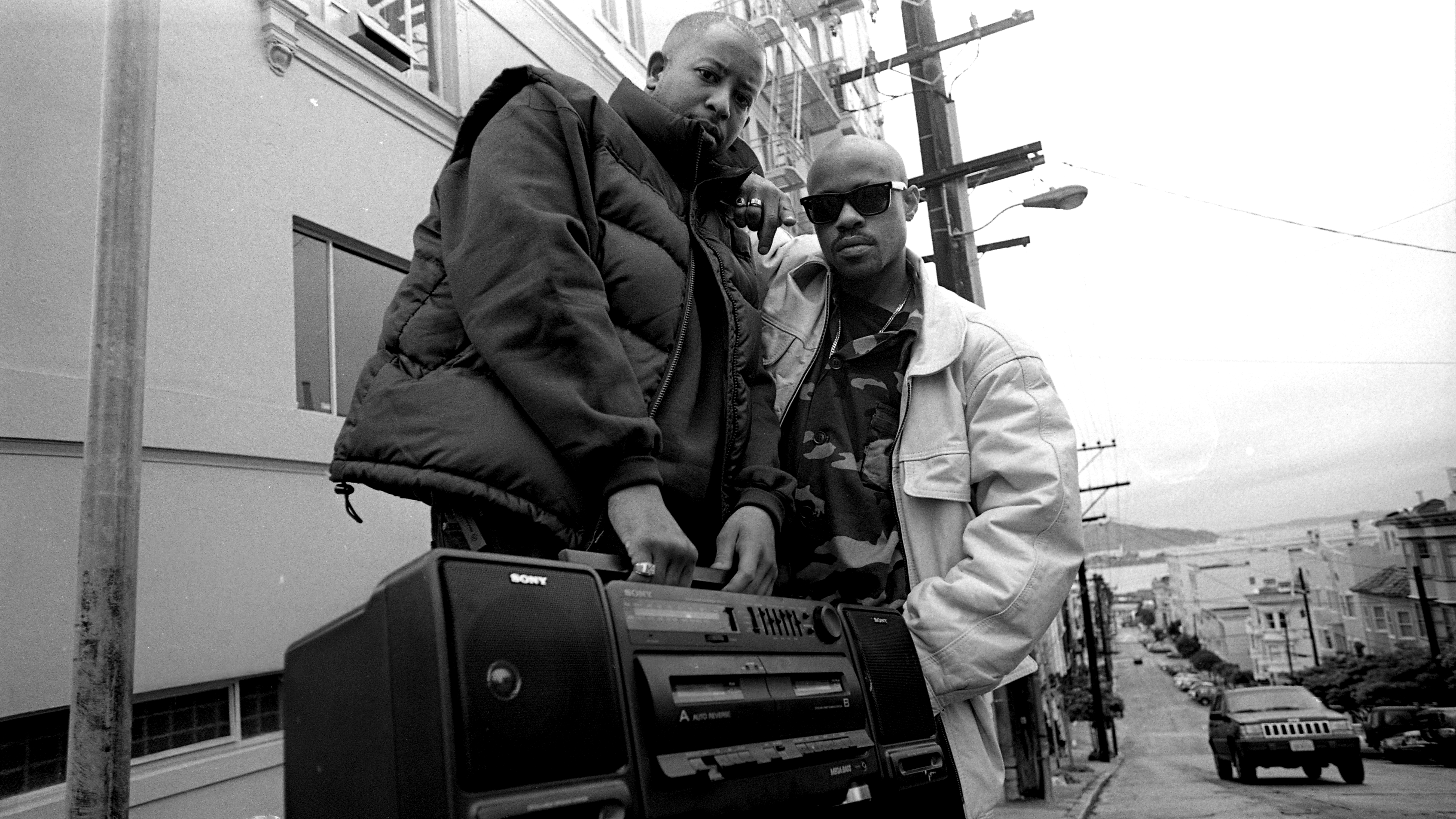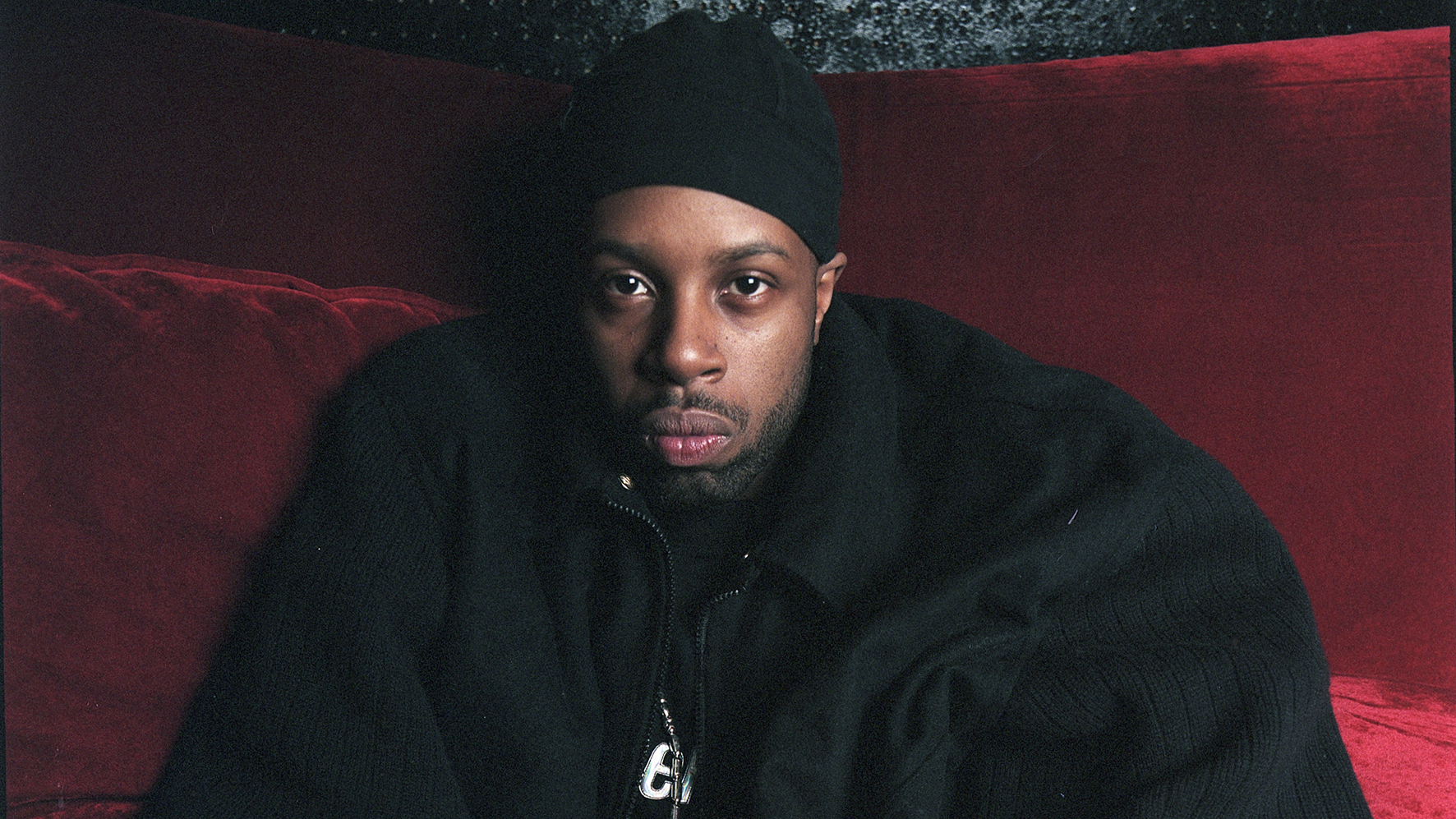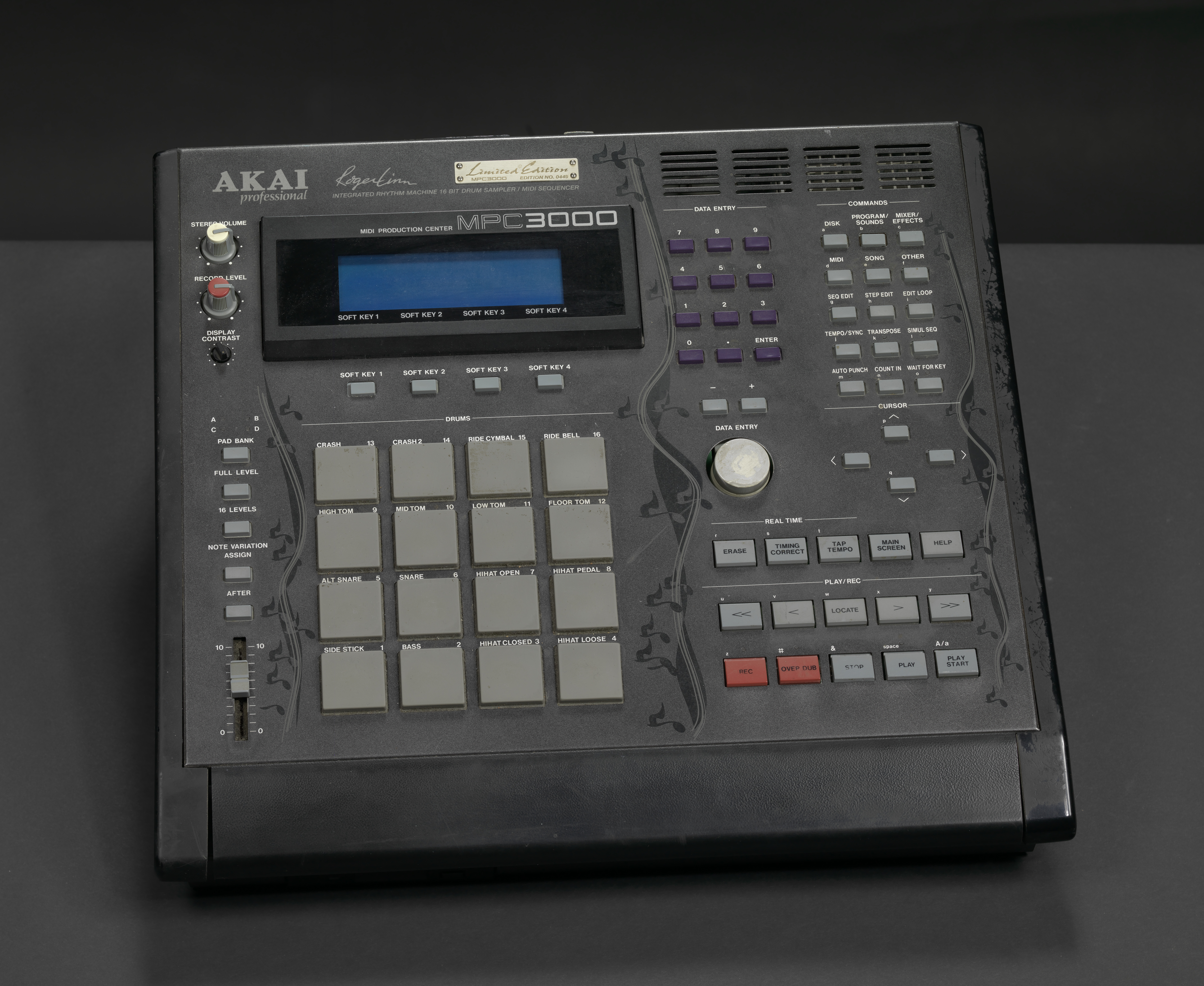
Hip-hop turned 50 last year. During that half-century, the technology used to create this globally influential sound has continually moved forward. However, there's one tool that has remained absolutely essential to any producer's arsenal: sampling.
In hip-hop production, sampling offers artists an opportunity to demonstrate creative ingenuity, technical ability, and unorthodox thinking, all the while paying tribute to the figures that have helped shape their understanding of music. From chopping up sweet vocal harmonies to create a brand new melody, to building a whole track around an obscure piece of instrumental improvisation, samples can add an entirely new dimension to a track.
With that in mind, we're here to walk you through 10 moments of creative genius in hip-hop sampling history.
1. Salt-N-Pepa - I Desire
The first female rap act to achieve gold and platinum status in the US, Salt-N-Pepa accelerated the establishment of hip-hop within mainstream American culture during the mid-late-1980s. Produced by Hurby 'Luv Bug' Azor, I Desire featured on their debut album Hot, Cool & Vicious, best known for including hit single Push It. The track's significance comes from its central rhythm, which hinges on a six-second sample of a percussive break played by G.C Coleman, the late drummer of '60s funk and soul band The Winstons, titled Amen, Brother.
Azor was still fairly new to sampling at the time, introduced to the production method when legendary DJ Marley Marl showed him Electro Harmonix's 8-bit sampler The Instant Replay. Therefore, his slowed-down drum loop is nowhere near as mind-blowing as some of the bits of creative ingenuity featured later in this list; however, it was the first example of a major act using the now-famous Amen Break, thought to be the most-sampled piece of music in history.
The Amen Break has since been used in countless US hip-hop tracks and sparked the invention of sounds like jungle and drum and bass. As a result, this is an essential piece of hip-hop sampling that laid the groundwork for almost everything that followed.
2. Pete Rock & C.L. Smooth - They Reminisce Over You
When psychedelic rock pioneers Jefferson Airplane recorded their cult track Today in 1967, the band couldn't have predicted the musical journey they were putting in motion. A few months later, Californian saxophonist Tom Scott released a jazzy reworking of the track, featuring a meandering, winding sax solo slap bang in the middle. Two decades passed before East Coast beatmaker Pete Rock heard the track and saw its potential.
"I don't think anybody but Pete Rock would've heard that loop," said hip-hop legend Talib Kweli in a recent podcast, discussing the track. After discovering the sample while digging with fellow NY rapper Large Professor, the renowned producer used his Akai SP-950 to isolate and flip not just Scott's iconic sax run but also a blend of moody vocal hums that helped form the rhythmic and melodic core of They Reminisce Over You. Today, the track remains a powerful tribute to the duo's late friend Trouble T-Roy, and a testament to Rock's creative mind.
3. J Dilla - Don't Cry
When Akai launched the MPC3000 in 1988, it allowed producers to store a variety of samples and rework them into various different rhythms and sequences using its 16 touch-sensitive pads. The MPC3000 soon became the tool of choice for a number of prominent hip-hop producers, Detroit's J Dilla being one of them. It represented the core of his production style, but he didn't utilise this tool like anyone else, refusing to use quantisation and creating fascinatingly loose, off-kilter sequences as a result (according to some, he "humanised" the machine).

Don't Cry is a beautiful example of his unorthodox approach; against a relaxed, rolling beat, he chops up a sequence of kicks and snares from across The Escorts' 1974 track I Can't Stand (To See You Cry), each of them set against a slightly different vocal pitch. By resequencing these snippets in a completely different order using his MPC, Dilla created a majestic, soulful, and intricately textured hip-hop beat, with the looseness of his production style opening up exciting new possibilities.
4. Mobb Deep - Shook Ones, Pt. II
New York producer Havoc grew up in a musical household, his DJ dad helping instill him with an ability to engage with sounds in extremely innovative ways. As one half of Queensbridge duo Mobb Deep (formed with Prodigy in 1991), he utilised that skill adeptly to create the seminal hip-hop track Shook Ones Part II in 1994.
The limited eight seconds of sampling time afforded to him by his Akai MPC60 prompted Havoc to get creative. After tracking down a little two-second snippet of piano on jazz icon Herbie Hancock's Jessica, he began messing with its tempo and pitch, slowing things down and repitching it to create a dark, ominous sound.
What makes his piano loop — which forms the backdrop of Shook Ones Part II — special is the fact that the second half of its melody is the exact same sample, just refashioned and sped up to build the perfect counterpoint to the first two notes.
5. Gang Starr - Work
DJ Premier is widely regarded as one of the finest hip-hop producers in history. Born in Houston, he moved to New York as a teenager and started making music with Boston-born MC Guru, forming the duo Gang Starr in 1989. It was almost a decade later that the group released Work, a clean, crisp 90s hip-hop classic created for the soundtrack to 1998 thriller Caught Up and later featured on the studio album Moment Of Truth.
According to DJ Premier, the filmmakers were after "the typical Gang Starr sound with a bit of brightness," and he found that in a four-second break that serves as a segue between two parts of New Jersey R&B group The Manhattans' 1979 song Devil In The Dark. It's a miniscule collision of strings, piano and rhythmic vocals that Premier isolated using an Akai S950 sampler and transformed into the foundation of a light, bouncy 93bpm bop that became an instant classic.
6. The Notorious B.I.G. - Ten Crack Commandments
Here, we've got another entry from hip-hop royalty DJ Premier, who once again unearthed the potential in a piece of obscure jazz experimentation to come up with the melodic root for Ten Crack Commandments. Featuring on the final studio album of East Coast rap titan The Notorious B.I.G., the track sampled a brief guitar slide from jazz pianist Les McCann's 1977 track Vallarta.
The lick is so smooth and juicy that Premier couldn't help but chop it up, slow it down, loop it and layer it with tons of added turntable scratching, and the results are outstanding. This video of Premo in action, embedded below, shows exactly how he broke down McCann's soft, samba-flecked elevator music and transformed it into one of the hardest hip-hop tracks of all time.
7. The Pharcyde - Drop
On top of solo releases like Don't Cry, J Dilla has produced thousands of incredible hip-hop beats for other artists (many of which will never see the light of day). Drop is up there with his most famous.
While working on Labcabincalifornia, the second album from LA crew The Pharcyde, Dilla built this beat by grabbing a clip of Jazz harpist Dorothy Ashby and reversing her florid strokes to turn the melody into something murkier, more ambient, and more squeezed-sounding. Against that texture, he patched in a simple vocal from The Beastie Boys' The New Style to create an irresistible loop.

The influence of Dilla's sampling went beyond music; according to director Spike Jonze, the backwards-looking aesthetic of the song's music video was inspired by the reversed nature of the sample at its core. There's a reason that J Dilla's original MPC3000 is displayed at the National Museum of African-American History and Culture in Washington — arguably, no one has used this classic bit of gear more innovatively than him.
8. Madvillain - All Caps
The Californian producer Madlib and the late great British-American rapper MF Doom first came together to form Madvillain in 2002, going on to become arguably the greatest hip-hop double act of the 21st century. That status was cemented by the cult '04 album Madvillainy, a record packed with genius moments of sampling from Madlib. But arguably the pick of the bunch is All Caps.
The genius of the sampling on All Caps comes down to the bizarre places Madlib sourced his sounds from. Oddness and obscurity is a hallmark of Madlib's production style, but this instrumental takes things to the next level with its sequence of stitched-together 1970s TV themes. The most crucial melody is a dramatic orchestral motif derived from the Quincy Jones-composed opening sequence of the detective series Ironside.
Employing a remarkably simple set-up centred around a Boss SP-303 sampler and a Fisher Price record player, he worked his magic, speeding up the theme and augmented it with a sequence of dark piano runs, grounded by deep sub bass and tight snares.
9. Kanye West & Jay-Z - Otis
Otis Redding was an artist with a phenomenal creative mind, but even he would've been astounded by the amount of new life and energy that Kanye West breathed into a couple of seconds of his vocal improvisations. Recorded in 1966, the US soul singer's song Try A Little Tenderness provided renowned crate digger Kanye with tons of ammo, but the way he restructured it was still breathtaking.
Kanye West reportedly only needed a spare 15-20 minutes, while kicking back in New York's Mercer Hotel, to create the beat. Running down the clock before he had to catch a flight but deeply immersed in his basic Ensoniq ASR-10 keyboard and MPC2000 set-up, he began chopping up a couple of seconds of Otis Redding's Try A Little Tenderness, focusing on a raw, strained vocal outburst from the lead-up to Redding's impassioned final chorus.
Ye transformed that vocal snippet into the rhythmic base of the entire track's verse structure, creating arguably the most memorable song on the collaborative album Watch The Throne — a great reminder of the producer's outstanding ear.
10. Kendrick Lamar - Money Trees
DJ Dahi might not enjoy the iconic status of some of the other producers mentioned in this article, but he's fast becoming one of the most in-demand beatmakers in the game. He's been collaborating with Compton rap heavyweight Kendrick Lamar for well over a decade, and while there are several Lamar/Dahi collabs we could pick for this list, perhaps the duo's best moment to date came with 2012 single Money Trees.
Silver Soul, a swirling, atmospheric burst of psychedelic dreaminess from indie-pop outfit Beach House, was Dahi's source for the track. He reversed the seven-second sample, squashing and looping it to design a synth pad-esque sound with the kind of creepy, devilish quality that's often associated with reversed records and which works as the perfect background for Lamar's hazy tales of street life. The track is a fitting example of how hip-hop continually searches for new sample sources outside the traditional realm of funk, jazz, and soul.
To find out more about the creation of the track — and some other K.dot classics — check out our article on 5 songs you need to hear by Kendrick Lamar.







